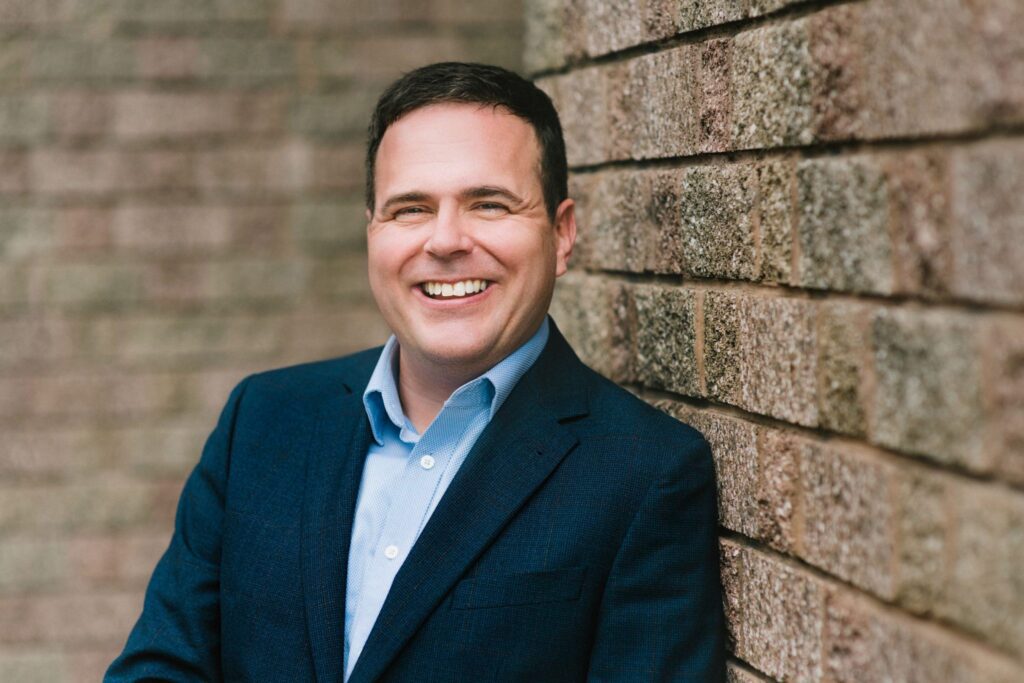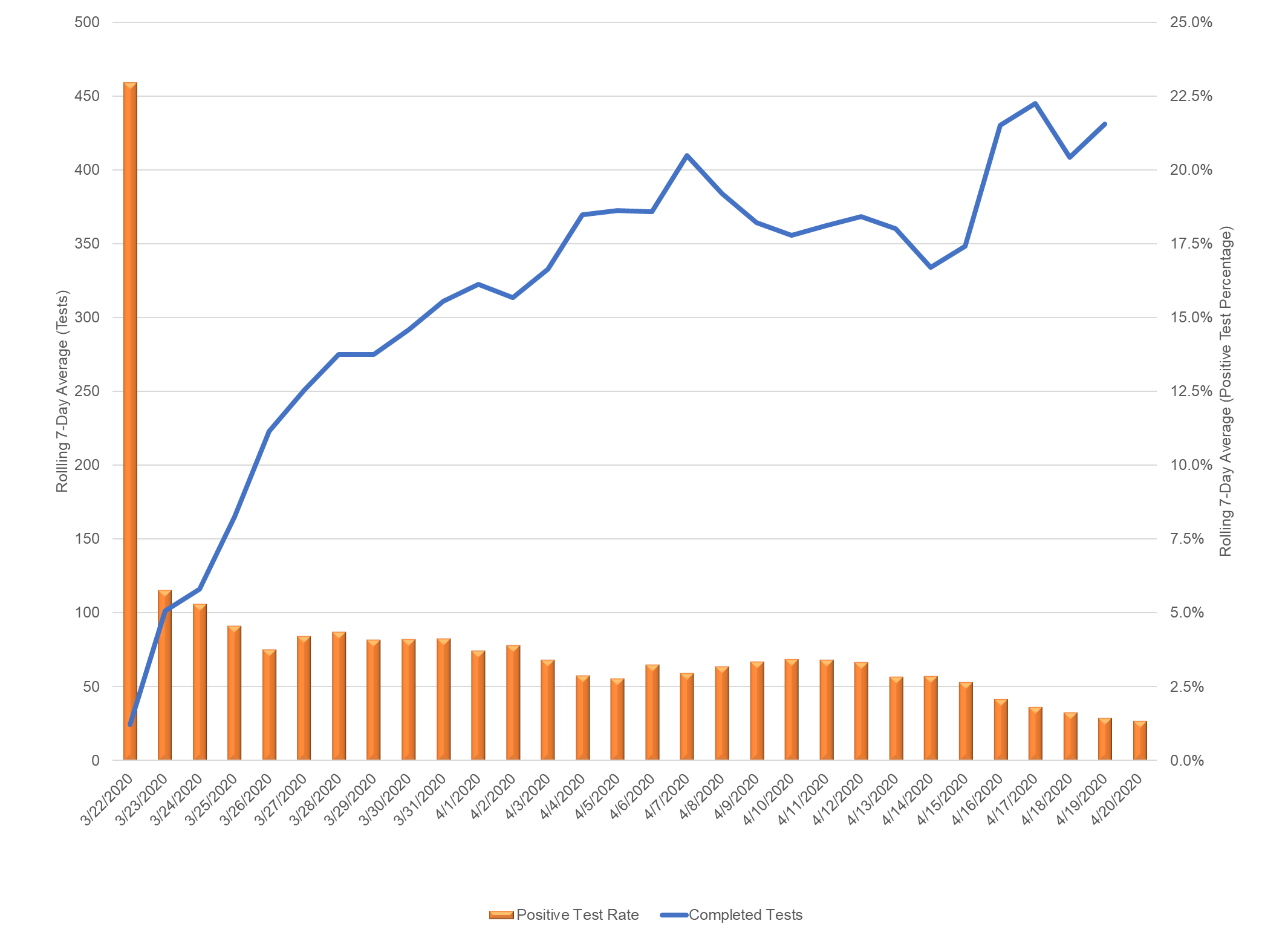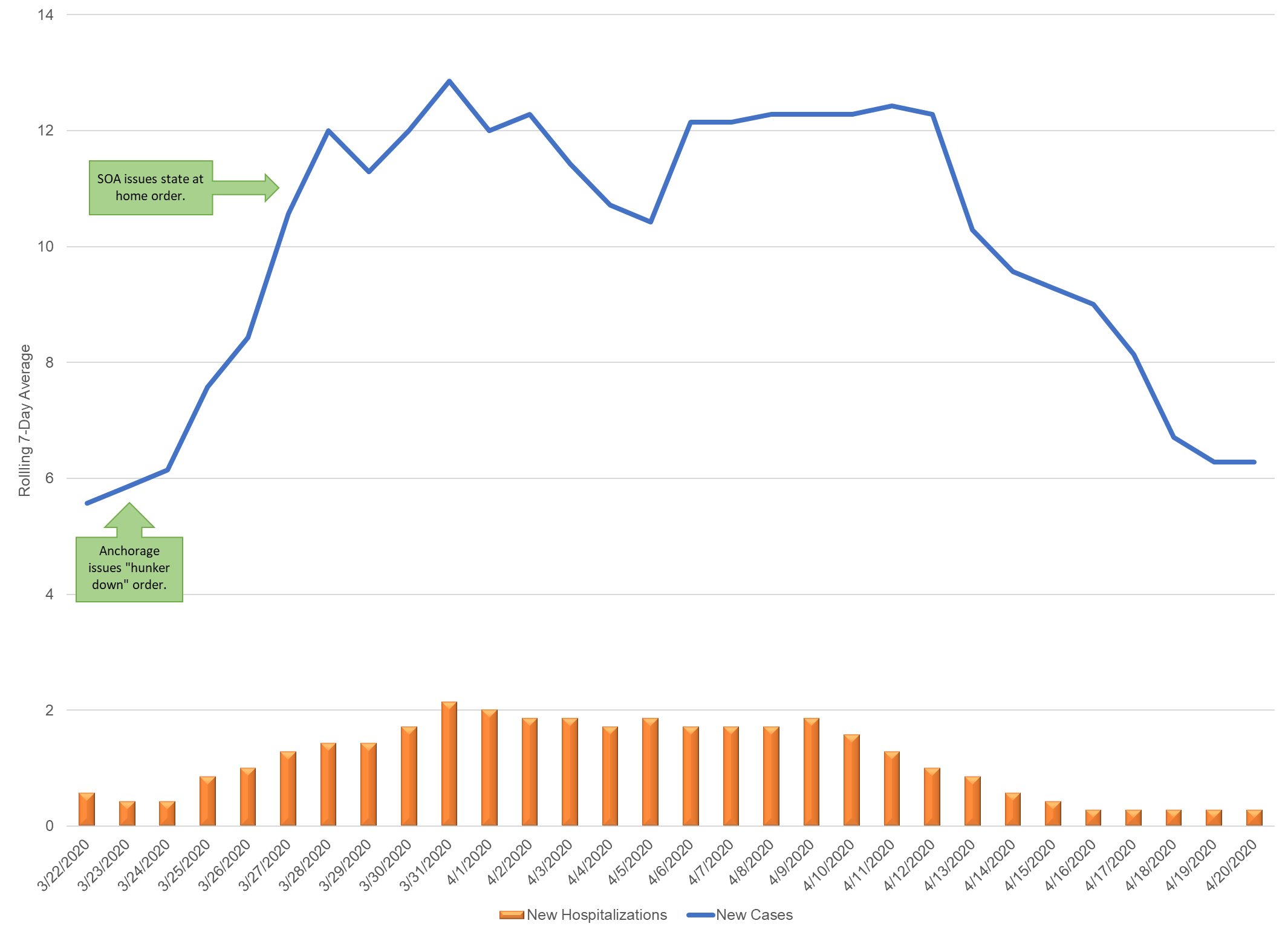Alaska is at a pivotal moment which calls for both cautious celebration and a watchful eye towards the future. Over the last 6 weeks, the Alaska economy has been rocked by the economic effects of COVID 19. Oil prices are at a multi-decade low, the summer large ship cruise season has been functionally cancelled, and nearly 3 times as many Alaskans have lost their jobs in a month as did in the 2015-2018 recession. How in the world can Jonathan want to cautiously celebrate?
I want to celebrate because it is becoming clear that we are making great strides in controlling the spread of COVID 19 in Alaska and reducing the number of new daily infections. Between the first draft of this post and the one you are reading now, both the Governor and Anchorage’s Mayor have announced plans to start normalizing economic activity – it’s a fast-moving situation. To everyone that practiced social distancing and followed public health measures to preserve human life over the last 4 weeks- Congratulations! Please give yourself a pat on the back! You did this! The State of Alaska’s COVID 19 data show that the average number of daily new infections is dropping rapidly. In fact, the 7-day average of daily new cases has fallen from a high of 12.85 cases per day to 6.29 cases per day as of Tuesday, April 21st; the current average is the lowest in a month and nearly lower than the average that could be calculated seven days into the outbreak. The average number of new hospitalizations per day has fallen from over 2 hospitalizations per day to less than 0.3 new hospitalizations per day. There were only two days in the last seven when someone was hospitalized in Alaska from COVID 19. This streak is the best since the outbreak began.
Figure 1. 7-Day Average Daily New Infections and Hospitalizations
The falling rate of new cases and hospitalizations aren’t the only signs of Alaska’s progress against COVID 19. The state’s aggregate ability to test for the disease has increased consistently over the last month. The average number of completed tests is now over 400 per day and the percentage of those tests yielding positive results is falling. Just three weeks ago, more than 5 percent of tests were positive, while over the most recent seven-day period less than 1.5 percent of tests were positive. These data all point to lower levels of viral activity and greater public health capacity.
Figure 2. 7-Day Average Positive Test Rates and Daily Tests Completed
Alaska is on track towards meeting at least one of epidemiologists’ suggested indicators for loosening public restrictions- two weeks of significant declines in viral activity leading to very low or no positive tests. Clearly both the Governor and Mayor Berkowitz feel we are making progress. With luck and continued diligence, we will hit the indicator officially late next week. There is another public health indicator though that is going to be more challenging to meet: having a robust and sustainable testing system. As a state, we have made incredible progress in the last month with respect to testing, but we are only testing about 40 percent of the rate at which we should be testing based on the latest advice from researchers. Public health professionals at Harvard and Johns Hopkins are suggesting a minimum testing rate of 152 tests per 100,000 residents. In Alaska, that testing rate requires us to average 1,100 tests per day. We have some work to do to get from averaging 450 tests per day to averaging 1,100 tests per day, but there are positive signs. On Friday, April 17th and Tuesday, April 21st the state reported over 800 completed tests in the prior 24 hours. We need to sustain and build on that testing rate. There are large challenges in increasing the rate given the shortage of test kits, reagents, nasal swabs, and other vital supplies.
In about three short weeks, a chrome-bodied beast with a bullet-shaped head and black gums will emerge from the Gulf of Alaska and take its first step towards a diner’s plate in the Pacific Northwest. The first Chinook Salmon harvested in the Copper River salmon fishery will herald the beginning of Alaska’s summer salmon fisheries. Last year, our summer salmon fisheries generated more than $650 million in payments to permit holders plus hundreds of millions more in processing worker wages and fisheries taxes. These fisheries generate thousands of jobs and pump money into small economies around the state. There are two points about which we must be very frank: 1) In this moment Alaska needs all the economic activity it can safely get, and 2) Every person who steps off the plane from Outside is a potential carrier of the virus which causes COVID 19 and raises the possibility of undoing the progress we’ve all helped create this past month. We need the economic activity and we need to do our best to ensure that we are keeping Alaskans safe. If we have another statewide outbreak of COVID 19, we will be reliving some form of the last month and many small businesses can’t do that again.
Can we have both public safety and a more normal level of economic activity and daily life? Potentially, but only with extraordinary cooperation between industry leaders, state officials, local officials, public health experts, medical providers, and the thousands of fishermen, crew, and processing workers involved in these fisheries. Given the risk of a new viral outbreak, this cooperation will have to include some combination of robust local testing capabilities, random mandatory testing, quarantine of arriving workers until they’re known to be COVID free, limiting the mixing of fishery participants with their local host communities, the ability to quarantine and treat patients locally or on-site, contact tracing and tracking, and other measures yet to be defined. Local news organizations have been doing a good job covering the debate and the feelings of various stakeholders and those reports are available online.
These issues aren’t limited to Alaska’s summer salmon fisheries. They are the same issues we will face this fall when kids go back to school and teachers from Outside arrive to serve communities off the road system. Any of the readers out there who are parents know that it takes about 3 weeks of mixing the kids together and then everyone has the “back to school” cold. Until we have a vaccine or highly effective treatment for COVID 19 we need to develop a recipe that gets Alaska back to work and school, while keeping the virus in check. The development of that recipe starts now with newly relaxed restrictions on economic and social activity. We will be refining that recipe until we have that cure or treatment that we all want.
Jonathan’s Takeaway: We’re making progress and you made it possible. The challenge over the next 6-12 months is learning to how to have an economy in the presence of COVID 19. We can do it, but we need to stick together and put our backs into it.
Jonathan King is a consulting economist and Certified Professional Coach. His firm, Halcyon Consulting, is dedicated to helping clients reach their goals through accountability, integrity, and personal growth. Jonathan has 23 years of social science consulting experience including 16 years in Alaska. The comments in this blog do not necessarily represent the view of employers and clients past or present and are Jonathan’s alone. Suggested blog topics, constructive feedback, and comments are desired at askjonathan@apcm.net.
4/24/20









